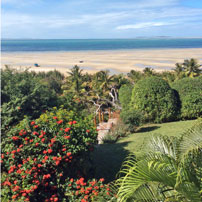 After a week or so of early morning wake up calls, days filled with exhilarating adventures in the bush and late nights chatting with new found friends at the camp fire, what better way to relax than head to the beach.
After a week or so of early morning wake up calls, days filled with exhilarating adventures in the bush and late nights chatting with new found friends at the camp fire, what better way to relax than head to the beach.
Leisurely breakfasts overlooking the ocean, lingering over your morning coffee with the biggest decision of the day being whether to bask in the sun, enjoy a spa treatment or perhaps try your hand at a new activity. It is the perfect way to relax after the rigors of a safari!
I spent ten days travelling along some of the 1500 miles of Mozambique’s beautiful coastline and was charmed by the variety of accommodation on offer, the beautiful beaches, the wondrous submarine world and perhaps most of all, by the people. If nothing else, this trip reminded me what a positive effect tourism earnings can have on local communities.
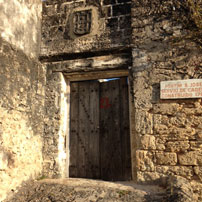 Mozambique was initially controlled by the Arabs who appreciated its significant position on the trade routes but was later colonized, in the 1750’s, by the Portuguese. The influence of those later settlers is still evident with the ruined forts and crumbled villas on Ibo Island, the colourful buildings on Ilha da Mozambique, the leafy boulevards of Maputo and of course in the national language of Portuguese.
Mozambique was initially controlled by the Arabs who appreciated its significant position on the trade routes but was later colonized, in the 1750’s, by the Portuguese. The influence of those later settlers is still evident with the ruined forts and crumbled villas on Ibo Island, the colourful buildings on Ilha da Mozambique, the leafy boulevards of Maputo and of course in the national language of Portuguese.
My journey started in the north of the country with a night on Ibo Island, which was once one of Mozambique’s most important towns, not least due to its strategic importance to the slave trade.
Ibo Island Lodge is not a traditional style beach property but it offers a fascinating insight into the community of the island, both past and present. The lodge was a labour of love and was resurrected from two hundred year old ruins. The physical building was done by the islanders who were taught the necessary skills to do so, as well as being taught English. 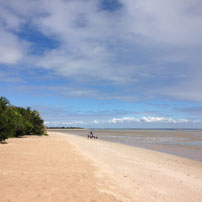 At completion many were employed whilst others now had skills that have enabled them to secure employment elsewhere on the island. A stay at the lodge includes both a cultural and walking tour of the local villages. As I arrived late and had limited time in the island, I wasn’t able to do the proper tour but instead I went for a shorter walk with one of the waiters. As we meandered along wide avenues it was easy to imagine the islands former glories as well as its dark history as we passed by the principal fort where slaves would be held before their onward transportation to the sugar plantations on Mauritius.
At completion many were employed whilst others now had skills that have enabled them to secure employment elsewhere on the island. A stay at the lodge includes both a cultural and walking tour of the local villages. As I arrived late and had limited time in the island, I wasn’t able to do the proper tour but instead I went for a shorter walk with one of the waiters. As we meandered along wide avenues it was easy to imagine the islands former glories as well as its dark history as we passed by the principal fort where slaves would be held before their onward transportation to the sugar plantations on Mauritius.
Today the island is known for its silversmiths who make jewellery, generally from melted down coins, in beautifully intricate patterns. As we stopped at one of these small shops, in fact no more than a room, I happily noticed that the shop owner had the makings of what looked like a little coffee shop at the back of the room. It was indeed, so we decided to stop so I could top up my caffeine levels and we sat outside to watch the sun edge closer towards the horizon. The owner, my companions’ father in law it turned out, joined us and 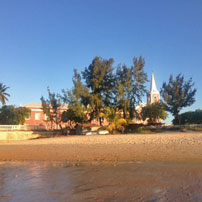 explained that as well as being a silversmith and a Mozambican barista, he was also trying to establish a coffee plantation in order to promote Ibo Island coffee. The entrepreneurial spirit would appear to be strong on Ibo!
explained that as well as being a silversmith and a Mozambican barista, he was also trying to establish a coffee plantation in order to promote Ibo Island coffee. The entrepreneurial spirit would appear to be strong on Ibo!
While Ibo Lodge does not have picture perfect beaches on its doorstep, it does have a fabulous sandbank to which they take guests at low tide. A gazebo is set up, meals are served and hours can be spent lazing, swimming or snorkelling in crystal clear waters.
Should you prefer to have all of this on your doorstep, the private island resort of Azura Quilalea is just a forty minute boat ride away and is one of the few places in Mozambique where you can snorkel directly from the beach and you can still take day trips across to Ibo by boat or by helicopter.
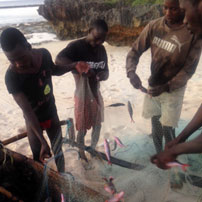 As I headed further south the landscape changed and dilapidated villas were replaced by local villages where most homes are small thatched hats and the villagers are mostly subsistence fishermen.
As I headed further south the landscape changed and dilapidated villas were replaced by local villages where most homes are small thatched hats and the villagers are mostly subsistence fishermen.
Nuarro Lodge is remote, a two or four hour road transfer from the nearest commercial airport (although we would suggest flying into their own airstrip in at least one direction), and it is the only lodge set on the spectacular Nanatha Bay. It is completely off the grid and is an eco-lodge in the truest sense of the word. Similar to Ibo Lodge the local villagers helped to build the property and many have taken the skills they learnt during the process back to their own homes; it is not unusual to see a hut with a corrugated roof or even a solar panel attached!
The main draw at Nuarro is the water, both above and below and here I did something I never thought I would do; my very first dive!
The offer of doing a dive was met with some scepticism on my part and my, now obviously very naive, question as to whether they meant in the sea was met with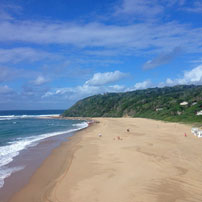 wry amusement, not least as Nuarro does not have a pool! There was nothing elegant about my first foray into the underwater world. I will admit that it took quite a few attempts for me to actually roll backwards, Jacques Cousteau like, into the waters another false start thereafter, before I began descending. But then I found my flippered feet touching the sandy bottom of the sea bed. It was an extraordinary moment for me looking up and seeing the outline of the hull of our boat shimmering above. I had done it!
wry amusement, not least as Nuarro does not have a pool! There was nothing elegant about my first foray into the underwater world. I will admit that it took quite a few attempts for me to actually roll backwards, Jacques Cousteau like, into the waters another false start thereafter, before I began descending. But then I found my flippered feet touching the sandy bottom of the sea bed. It was an extraordinary moment for me looking up and seeing the outline of the hull of our boat shimmering above. I had done it!
We spent about thirty minutes under water and I still smile when I think of the vibrant colours and the amazing diversity of life that we saw, from the exceptionally well camouflaged scorpion fish and the tropical colours of the nudibranch, to the tiny little eels that would pop up from the bottom and then rapidly disappear as soon as they sensed us. Without doubt, the highlight was being surrounded by a shoal of small orange and white fish swarming around our torsos and heads and upwards like a funnel. It was quite magical!
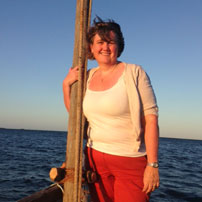 There is an excellent range of diving options available at Nuarro and much more besides. Walking, cycling, village visits and snorkeling from the beach are all available. From late July through to October this bay becomes a playground for the migrating humpback whales and the use of a hydrophone means that even the guests remaining on board the boats will experience the haunting melody of whale song.
There is an excellent range of diving options available at Nuarro and much more besides. Walking, cycling, village visits and snorkeling from the beach are all available. From late July through to October this bay becomes a playground for the migrating humpback whales and the use of a hydrophone means that even the guests remaining on board the boats will experience the haunting melody of whale song.
A further three hour drive south through bustling village markets brought me to Ilha da Mozambique from where I was being collected to cross the bay by dhow, to Coral Lodge.
This tiny island, only three kilometres long and 500 metres across, is a former Portuguese capital of the country and is accessed by a road bridge that is actually half a kilometer longer than the island itself! Getting to the island was in itself an interesting event; the bridge has only a single track with passing bays on either side and it s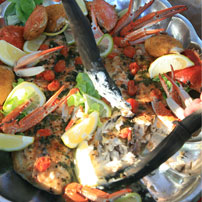 eems to be a local pastime to see how many vehicles you can get into one bay. It felt like being part of a long and deliberate dance as one vehicle inched forward to let another one pass by but slowly by slowly the traffic moved and finally we arrived on the island.
eems to be a local pastime to see how many vehicles you can get into one bay. It felt like being part of a long and deliberate dance as one vehicle inched forward to let another one pass by but slowly by slowly the traffic moved and finally we arrived on the island.
Ilha da Mozambique is a UNESCO World heritage site, due primarily to the faded grandeur of the colonial buildings but it is an island of two halves. Stonetown in the north is a reflection of its European heritage whilst Macuti Town, in the more African southern half of the island, is home to most of the 16000 inhabitant. It offers a fascinating contrast and one that makes a day trip from Coral Lodge an excellent option.
Not all of the beaches in Mozambique have gently lapping crystal clear waters. White Pearl Beach Resort is found in the far south of the country, only one hours drive north of the border with South Africa and is set on a two kilometre stretch of pristine beach. Here, the waters are still warm but the waves are bigger; perfect for splashing around in and for body boarding.
Likewise in the central Inhambane region, the seas are much bigger, certainly making for a more energetic and exciting start to any boat trip as they always necessitate an adrenaline fueled surf launch. The areas of Tofo and Barra have become increasingly popular, particularly with divers who are attracted by the high numbers of whale sharks and manta rays in the waters. The area has a more informal feel to other parts of the country and accommodation options are small and personal. However, access is an issue with Mozambique’s LAM airline being the sole carrier to Inhambane and having an unfortunately deserved reputation of being unreliable. So, until such time that their service improves we can’t confidently sell the area.
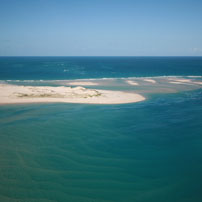 My final stop offered perhaps the greatest contrast in a small area. Vilankulo (the town is also known as Vilanculos) is the gateway to the beautiful Bazarutu archipelago, a chain of five islands, two of which offer top end accommodation which we have been recommending for quite some time. Anantara on Bazaruto Island is a five star resort style hotel with all of the facilities one would expect whilst Benguerra Lodge and Azura, both on Benguerra Island are perfect for guests wanting a luxury island getaway.
My final stop offered perhaps the greatest contrast in a small area. Vilankulo (the town is also known as Vilanculos) is the gateway to the beautiful Bazarutu archipelago, a chain of five islands, two of which offer top end accommodation which we have been recommending for quite some time. Anantara on Bazaruto Island is a five star resort style hotel with all of the facilities one would expect whilst Benguerra Lodge and Azura, both on Benguerra Island are perfect for guests wanting a luxury island getaway.
More often than not clients will arrive into Vilankulo and either climb directly onto their helicopter transfer or in the case of Anantara, board their boat transfer to Bazaruto Island. I discovered however that there is a strong argument, plus a financial benefit, to staying in Vilankulo itself.
Originally a fishing village, the town has grown over time, in no small part due to tourism, and today it has the feel of a bustling, friendly and, relative to elsewhere in the country, affluent town.
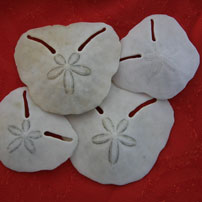 The town beach is extensive with crystal clear and shallow waters which have made it a hot spot for kite surfing and paddle boarding. For me, staying in Vilankulo allows for a more authentic and indeed a more varied stay. It is easy to walk around during the day and a visit to the local markets is an invitation to participate in the local pastime of haggling, which the locals will enter into with relish. There are also more options in terms of dining with several good restaurants in the town, mostly showcasing the fresh seafood being caught on its doorstep!
The town beach is extensive with crystal clear and shallow waters which have made it a hot spot for kite surfing and paddle boarding. For me, staying in Vilankulo allows for a more authentic and indeed a more varied stay. It is easy to walk around during the day and a visit to the local markets is an invitation to participate in the local pastime of haggling, which the locals will enter into with relish. There are also more options in terms of dining with several good restaurants in the town, mostly showcasing the fresh seafood being caught on its doorstep!
Accommodation options here are far more modest than on the islands but also much more cost effective. Casa Rex has the most beautiful gardens and similar to its close neighbor, Bahia Mar, it has wonderful views over the Indian Ocean towards Benguerra Island. Both properties will arrange local activities and excursions including day trips to any of the islands in the archipelago, taking a picnic lunch and snorkeling equipment, diving, canoe trips in the mangroves, horse riding or birding tours to mention just a few.
It’s fair to say that for the most part Mozambique does not offer quite as sophisticated, or as polished, a stay as in say Mauritius but for me the interaction with the lodge staff was a core part of my enjoyment of my stay. It’s true that you might have to repeat yourself a couple of times to ensure that you have been understood, but the staff were unfailingly keen to get things right and their can do attitude and generous spirit went a long way to overcoming any language difficulties.
The huge attraction of these beautiful and remote beach 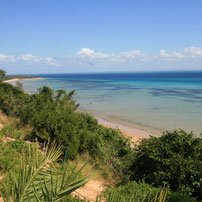
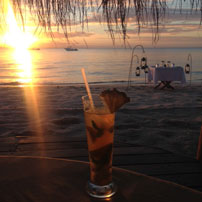 resorts can also be the challenge as access is not always straightforward. The most frequently used access point is through Johannesburg although Nairobi is also an option. Once in the country however you will have a further journey to undertake, be that by plane, road, boat or helicopter and you may arrive feeling a little travel weary.
resorts can also be the challenge as access is not always straightforward. The most frequently used access point is through Johannesburg although Nairobi is also an option. Once in the country however you will have a further journey to undertake, be that by plane, road, boat or helicopter and you may arrive feeling a little travel weary.
However, the relaxed Mozambican vibe will soon works it’s magic however and after a good night’s sleep you will feel refreshed and well able to take those difficult decisions as to sunbathing, diving, swimming, having a massage etc…….
A final thought, Vasco da Gama called Mozambique ‘Terra de Boa Gente’, land of the gentle people and I couldn’t agree more.
